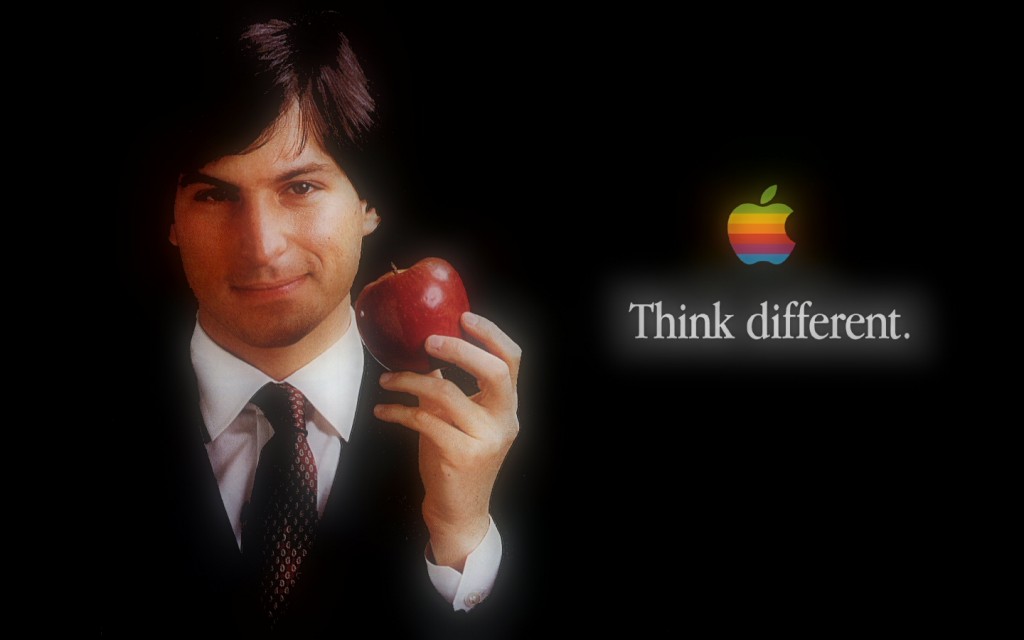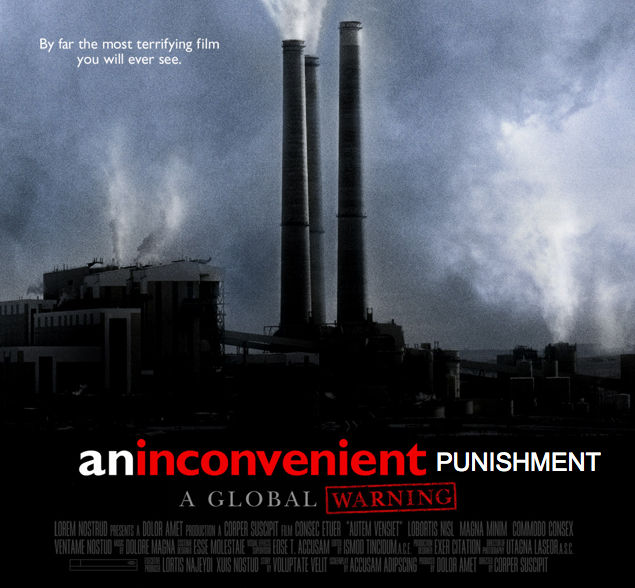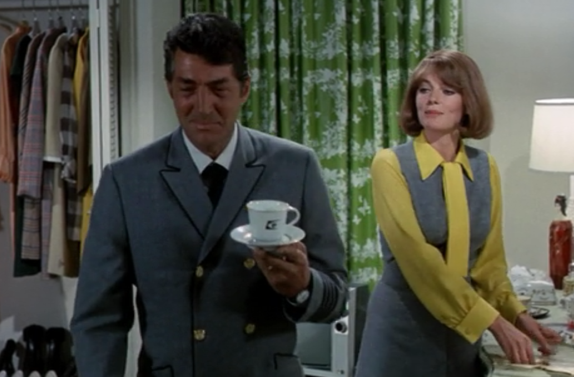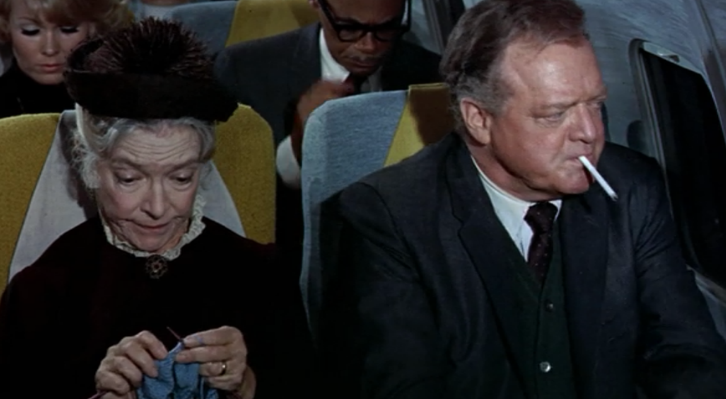#166) AGU: Make Your Science Video AWESOME (at our workshop)
October 31st, 2011
Going to AGU in S.F.? We’re putting together a really fun event with two of my film school classmates on Tue. Dec. 6
yo
pics

THE S FACTOR PANEL: Okay, we admit, it’s a cheesy title and video, by choice. But the three of us were film school classmates at U.S.C. (class of ’97) and this is going to be a lot of fun. Jason Ensler (the surprise filmmaker) is a long time director in Hollywood (currently producer and director of the popular TNT show, “Franklin and Bash“), Sean is a veteran screenwriter (horror flicks in the franchises of Halloween, The Crow, and a co-writer of the recent “Conan the Barbarian” remake), and me (a guy who dreams of being one of them). I’m really looking forward to it.
conan
SEND IN YOUR VIDEOS
We’ll be running a 3 hour workshop on the evening of Tuesday, Dec. 6 in San Francisco at the American Geophysical Union annual conference at the Moscone Convention Center. If you’re planning to attend the meeting, we want you to send us your video of 5 minutes or less. We’ll be choosing 10 of them, each of which will be “workshopped” (our cheesy catchall phrase for the promo video) meaning we’ll show your video to the audience, the three of us will be like American Idol judges, offering up our analysis of what is both good and what could use more work in the video, then we’ll moderate questions and answers with the filmmakers.
It will be an informal, low pressure event — more of a conversation than any sort of formal presentation. And I for one am REALLY looking forward to hearing what my other two panelists have to say — they are smart and creative guys with a great deal of experience.
EVERYONE IS INVITED TO ATTEND! Send in your videos by this Friday. For details visit: www.AGUsFactor.org
SEE YOU IN SAN FRANCISCO!!!
#165) MALIBU LAGOON: A Big Fat Victory for Science and Civility
October 27th, 2011
No gloating, just relief — the court system does work, and the efforts of a lot of very dedicated people have been upheld
WIPEOUT. The opponents to the Malibu Lagoon Restoration Project lost in court. It’s pretty much that simple. The project will go forward next June. Unless they come up with some other tactic.
beachy
YOU PEOPLE AND YOUR “KNOWLEDGE”
For the past year I’ve been involved with this local issue of the restoration of the Malibu Lagoon. What drew me in was hearing the same sort of anti-science language you hear from climate skeptics — the same sort of “doubt casting” that Naomi Oreskes (in her excellent book with Erik Conway, “Merchants of Doubt”) and others have documented so well. I got so tired of hearing the distortions (speaking of which, I have an essay coming next week as part of a Roundtable Discussion in the Bulletin of Atomic Scientists about the political distortion of science — stay tuned!) that last spring I made a simple 5 minute video addressing 5 “myths” put forward by the opponents of the project. There was also this very good piece in Outside Magazine.
I don’t want to weigh in on the motivations of the opponents — I know a lot of them feel very passionately about protecting the local wildlife from any harm. I only want to say that A LOT of very decent people worked very hard for over a decade doing the best they could in crafting this project. No one felt particularly great about the idea that part of the lagoon has to be dug up to improve the flow, but the science pointed in that direction. It was all set to begin last June until a local group suddenly began an 11th hour objection campaign and managed to get an injunction until they could have their lawsuit heard, which is what happened.
Today, in court in San Francisco, the judge basically threw their whole case out. End of story. Hopefully.
It was a good day for science and civility.
#164) THE VISCERAL: Steve Jobs knew it
October 27th, 2011
The climate movement needs to follow in Steve Jobs footsteps, go to India for 7 months, and see if they can grasp the concept of intuition.
THINK DIFFERENT. He did.
apple a day
THE GREAT SPIRITUAL ONES ALSO HAVE INTUITION
This past Sunday on “60 Minutes” they presented an in-depth look at the recently deceased Steve Jobs through the perspective of his biographer, former Time Magazine editor, Walter Isaacson. He told about one of the key experiences in the life of Jobs. He had been grinding away working at Atari, frustrated. Then he took a leave and spent seven months wandering across India looking for spiritual enlightenment. And he found it.
Isaacson says:
“And when he comes back he says, “The main thing I’ve learned is intuition, that the people of India are not just pure rational thinkers, that the great spiritual ones also have intuition. Likewise, the simplicities of Zen Buddhism, really informed his design sense. That notion that simplicity is the ultimate sophistication.”
He got it. It’s 50% of what mass communication is about. Not knowing every single fact and detail and conveying it, but rather having the intuitive ability to distill it all down into it’s simplest elements.
The entire climate movement needs to take a seven month trip to India and see if they can get a clue about intuition cause they sure ain’t got it so far.
#163) Now THIS is the right way to deal with climate skeptics
October 24th, 2011
I have said this for a long time — you have to meet irrationality with irrationality. This is a PERFECT example.
borat
American environmentalists, take note. This is how you deal with people you deem irrational, in a likeable manner. You don’t yell at them red faced and accuse them of being guilty of crimes against humanity. You meet them with equal and opposite absurdity. Yes, using humor to deal with them may not seem like a perfect solution, but it’s better than the anger thing that simply doesn’t work and just makes people dislike you even more than the skeptic.
borat
LIGHTEN UP
Last year, I recommended that serious scientists and climate activists not engage in serious “debates” with climate skeptics. It just doesn’t make sense to say, “I think you are irrational, but now I’m going to try and use rational thinking to debate you.” If you think someone is irrational, then the thing to do is confront them with an equal and opposite irrational force, such as humor. And that’s exactly what these folks with this Borat piece have done, with a brilliant premise.
The world needs more of this. But unfortunately it seems to originate only with the British and Australians.
#162) CDC’s Zombie Apocalypse Rolls On!
October 19th, 2011
Imagine if reducing carbon emissions were somehow associated with a holiday. That’s what CDC has managed to do with their formerly-dull topic of “disaster preparedness” — they’ve now pegged it to Halloween, and things will never be the same
 A DEADLY SERIOUS TOPIC FOR THIS HALLOWEEN. The CDC’s Zombie Preparedness Campaign may sound like a bunch of silliness, but in truth it’s as serious as the deadliest infectious diseases they study. This Halloween they are releasing a graphic novel about zombies and disaster preparation. Disaster preparedness is a difficult mission and deserving of resorting to any means necessary to make it happen — even if you have to stoop to employing a topic that makes other people think you’re just having fun. The folks behind this campaign are not doing it for fun. I know. I’ve spoken to them. It’s A LOT of work. But worth it.
A DEADLY SERIOUS TOPIC FOR THIS HALLOWEEN. The CDC’s Zombie Preparedness Campaign may sound like a bunch of silliness, but in truth it’s as serious as the deadliest infectious diseases they study. This Halloween they are releasing a graphic novel about zombies and disaster preparation. Disaster preparedness is a difficult mission and deserving of resorting to any means necessary to make it happen — even if you have to stoop to employing a topic that makes other people think you’re just having fun. The folks behind this campaign are not doing it for fun. I know. I’ve spoken to them. It’s A LOT of work. But worth it.
cranberries
A 99% SUCCESS
This is another installment in our on-going observations of “Communication Brilliance In-progress.” I’ve written twice about the savvy of the small group at the Centers for Disease Control in Atlanta (here and here) who managed to take a topic that had become deeply institutionally entrenched as “hopelessly dull” (with the prevailing attitude of “you can’t get people motivated about a threat that isn’t present”) and through a little creativity and courage have converted $87 of effort into $3.4 million of free media exposure.
The juggernaut rolls on this morning with USAToday running a feature article on their front page about the next item in the campaign, a graphic novel for Halloween. Look at how good these people are. They only came up with the entire idea for this campaign in May. But no sooner did they conceive it than they moved it to the next level with appearances at Comic-con in NYC and Dragon Con in Atlanta. And now, in less than six months from inception have put together a graphic novel. They are hustling!
This is a true 99% total success. Not 100%. That would pretty much be impossible given the way the human brain is programmed. You just can’t please 100% of the people. Rarely has there ever been such an enormous public health mass communication success as this campaign (just look at the value/spending ratio of 3.4 million to 87, plus it won the prestigious Wow Innovation Award at the Platinum P.R. Awards), and yet … here’s a person I found commenting on a blog who hates them for having a little fun while others are suffering.
“I am so glad the CDC has its priorities straight. God knows being sure people are prepared for the ZOMBIE APOCALYPSE is more important than those of us who are sick and dying from M.E. (Myalgic Encepahlomyelitis). After all, we were just active and productive citizens adding our contributions to our nation and the world until we were struck down by this horrible disease. What are death and disease compared with BEING FUNNY?
If these CDC press guys such as David Daigle have time to talk about the dangers of zombies, one would think they would be able to help pursue the CDC’s defined goal of preventing the spread of disease, such as Myalgic Encephalomyeltitis.”
But “fun” is not what this campaign is about for the creators — it’s about using pre-existing pathways of mass communication to reach effectively the largest audience possible. And in that regard, this program is as deadly serious as the worst infectious diseases, which CDC spends the rest of their time combating.
To give them flak for having “fun” is like accusing a disaster relief team headed to Jamaica after a deadly hurricane of heading off on a tropical vacation. Same thing.
Bottom line, I feel sorry for this hater who clearly is living with some misery, but these CDC folks are the wrong target
#161) Skeptic in a Bottle
October 17th, 2011
Ah, the mind of the angry skeptic
THE ANGRY SKEPTIC. This guy doesn’t trust government. And he’s worried about his privacy. Which is what half of his emails say. As if his emails are somehow private.
helter skeptic
WORDS
I have a good friend — let’s call him Jim — with an older brother — let’s call him Tim — who is a major skeptic. He’s skeptical of climate change, of both parties of our government, of our President (big time), of basically any voice of authority or even compassion. He writes tons of emails to a group of about a dozen friends. We all endure his emails. Sometimes they are genuinely funny. Most of the time they consist of links to articles that espouse his mistrust of government. I keep putting up with them because I’m fascinated with these sorts of minds that are skeptical of everything. And because sometimes he’s genuinely funny.
One time I took the bait and wrote him a two page diatribe confronting his politics. I awaited his two page reply. All that came back, the next day, was an email that said, “Words.” Which I thought was beautiful.
So I wrote to Jim (the non-skeptic brother) the other day asking him what’s wrong with his brother. He sent this back, which I found to be an equally brilliant and perfect condensation of his poor brother’s life.
‘Tim is the guy on the outside of the football stadium watching the game on TV, complaining about how both teams are playing it, saying he has the right way to play, what they are doing is wrong … all the inside moves and details … yet … he hates football, never threw one, and has never been to a game.”
And the actual context of this comment is that Tim had said in one of his group emails that he is “voting for Cain.” To which Jim had to point out that though he is now in his 60’s, Tim has never in his life voted.
Words.
#160) How to be Smarter than the Average Facebook Drone
October 13th, 2011
It’s like reading the rule book first. If you read the Kristoff article you wouldn’t find yourself mystified by this image.
OH MY GOODNESS, WHAT A TRAGEDY! It’s called human nature. Learn a few things about storytelling and your life won’t be quite as filled with frustration and confusion.
kristoff waltz
READ THE RULE BOOK
This image is making the rounds on Facebook with lots of people agreeing with the punch line of, “The society we live in is really messed up.” Yeah, whatever.
If you understood the basic dynamics of how we perceive these things (largely through the telling of stories) — which you can get a good start on simply by committing to heart the simple principles laid out by Nicholas Kristof in his timeless Outside Magazine article — you wouldn’t be so amazed by this Facebook message.
It’s like watching a baseball game, not knowing the rules, and being baffled by the fact that, “Every time someone hits the ball they take off running — why is that?”
Read the rule book and you won’t be so confused.
#159) An Inconvenient Punishment
October 11th, 2011
The DVD of “An Inconvenient Truth” needs to come with a sticker that says, “WARNING: Cod Liver Oil Inside”
SCARRING A GENERATION
This essay isn’t driven by me — it’s driven by the people who send me emails. Last week I received yet another email from a college instructor who said, “These poor kids have to watch ‘An Inconvenient Truth’ during their lab.” She’s in Rhode Island. I can put you in touch with her if you need a validation of this. And lots of the other folks who write to me saying the same. She was asking me to give her a copy of my movie “Sizzle” as the antidote for the students.
This isn’t an exaggeration. I get a lot of these emails (along with the comment, “thank you for bringing some humor and lightness to this painful topic”), plus we hear it at Sizzle screenings, and during my university visits. Yes, I know I’m supposed to be a cheerleader for the climate movement and not be so critical. And I am still cheering for Al Gore — I think he’s the only true POTENTIAL leader in the movement, as I’ve said here and here. But his movie is bad news. Plain and simple. No two ways about it. And it’s damaging the psyche of an entire generation by forcing kids to watch a movie that begins with maudlin music talking about the mid-life depression faced by a tired old man after he got cheated out of the White House. Once again (I’ve said this MANY times) it is NOT a movie for children. It just isn’t.
When the National Science Teachers Association refused to distribute the 50,000 free copies of the movie that producer Laurie David tried to give them, they stated “non-endorsement” as their major criteria, but they really should have cited “child abuse.”
A handful of hardcore nerd kids love the movie — but they are already obsessed with the topic. The problem is what happens with the rest of the kids. It’s bo-ho-horing to the nth degree. And that’s what they will associate with the entire topic of global warming and climate science afterwards. Which simply should not happen.
space ghost
LIKEABILITY — THE MOVIE LACKS IT, BUT IT’S ESSENTIAL
Last month I spent a wonderful week at Cornell University doing all sorts of talks, screenings and discussions. One of the highlights of the week was visiting their Science Center. It’s a really great facility. One of the most interesting things I heard about was the sort of phenomenon of “resonance” (or whatever you want to call it) that happens for them with kids who grow up going to the Science Center where they always have a huge amount of fun. When they get to college, they come back to visit and feel a warmth and nostalgia for the place. They end up coming back and working as volunteers, saying they love the place because of those great childhood memories.
THAT is the sort of conditioning you want to achieve. Which is the complete opposite of college kids hearing about global warming and thinking, “oh, crap, that makes me think of that depressing adults movie they forced us to watch in 7th grade.”
Nothing like turning off an entire generation to what has been billed as the greatest threat to humanity.
#158) CREATING MOVEMENTS IN TWO STAGES: The Savvy of “Occupy Wall Street”
October 10th, 2011
“They have no message” — if you’re saying this, you’re probably a Nerd Looper
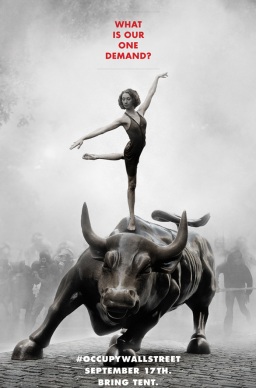
AN OBJECT OF BEAUTY (the Occupy Wall Street movement). Last year I whined about, “Where are all the demonstrations?” after the Gulf oil spill. The fear was that people have gotten so complacent with their online activism that they no longer want to go outside. This is one of the many refreshing things about the Occupy Wall Street movement — proof that people are still able to pull themselves away from their laptops. Yay!
tent it up
BUT YOU HAVE TO HAVE A MESSAGE (no you don’t)
Three weeks ago I was sitting with a group of people who were talking about the very start of the “Occupy Wall Street” movement. One rather obnoxious person very confidently said, “They’re a big waste of time — they have no message, they’re not organized, they should just go home.” Wrong. Demonstrably wrong now, three weeks later as you can see the significant amount of success they are experiencing in grabbing national attention.
That person’s critique makes me think of the most common criticism I heard from environmentalists of Al Gore’s movie, “An Inconvenient Truth.” So many times I’ve been in discussions and said, “I have some criticisms,” and someone else says, “I know, it was such a great movie, but then it got to the end and they didn’t have a good set of instructions of what you should do.”
Well, no. I completely disagree. It was not a good movie as far as movies go (see my standard critique), but it did succeed in stirring a following, and for that it didn’t need any instructions or message or anything specific at the end of it. If you think it did, you’re probably a Nerd Looper.
CREATING A MOVEMENT IN TWO STAGES
Who cares how the movie ended. It succeeded in the same way the Occupy Wall Street movement has succeeded. And same for the Tea Party. All three of these groups managed to achieve the “arouse” part of the “arouse and fulfill” couplet. The question is whether they are able to move to a second stage and formalize their enthusiasm into a long term movement. It’s pretty much the same as the shift in a new business from the start-up phase to the long term operation.
This kind of matches what I presented in “Flock of Dodos” with the figure that shows how an idea begins as a piece of intuition, which is not science and starts down in the gut, but then for it to turn into science (or a formal movement) must migrate upwards from the gut to the brain. Drawing on the small business parallel, it’s the transition from all the excitement of launching a new product to actually making things work over the long term.
The thing that I think is a shame with Al Gore is that he wasn’t able to put together a really, really good second movie that he could have released in 2008 which would have moved the enthusiasm generated in 2006 into a more formal mass movement. In November 2008 Gore was quoted in the NY Times saying that while his movie succeeded in creating awareness, it failed to create the sense of urgency needed to produce the mass movement they had hoped for.
Actually, what they did do in 2008 was spend a huge amount of money on lame-o television ads with political opposites sitting on a couch reading a script saying they agree about climate change. Which didn’t work.
TOO MUCH TO GET YOUR ARMS AROUND?
Last year Sharon Begley wrote an essay in Newsweek which ended with her drawing parallels between the Wall Street mess and climate change. At the broadest of levels, there are a lot of similarities. Both Wall Street and climate are problems that involve gargantuan amounts of information — so much that you wonder whether anyone really can in a single moment completely grasp the entire situation.
That was certainly the case for Wall Street where the role of “derivatives” and all sorts of other complex functions created a system for which there were simply too many cogs in the system to take it all in at once. Same for climate change. Just try following the average topic of debate on the blog Real Climate (which is perhaps the most highly regarded climate blog). It’s largely impenetrable to the average reader (the current topic is “spectral polar cartography”) yet it is the forum for plenty of heated argumentation from all sorts of non-scientists.
Years ago there was a major fisheries biologist who tried to make the case for “qualitative” modeling of some ocean fisheries rather than quantitative. The idea is that some systems, like the population biology of many ocean fisheries species, are so complex you can’t realistically produce enough numbers for any quantitative model to be accurate and realistic. Therefore you’re better off soaking in all the information you can, then making a prediction based on your gut instinct.
Which brings us back to the Occupy Wall Street movement. Civil rights author/activist Cornell West is quoted on the Wikipedia page about the movement saying, “It’s impossible to translate the issue of the greed of Wall Street into one demand, or two demands. We’re talking about a democratic awakening.”
I think he’s pretty much got it right there. The set of faults being addressed by the Occupy Wall Street crowd is so complex and far reaching that to try and distill it down to a handful of things right now would be to trivialize it and open up the potential for people to address the few things and think that’s all there is. This was the problem of the Gore film — it addressed a huge can of worms and actually did a great job of starting the fire, and that was all it needed to do — it didn’t need to lay out the agenda right then or tell people “the one thing they can do”. It just needed for people to pour out into the streets and start creating a POPULAR mass movement. The rest can come with the next stage, as the Tea Partiers have shown. But it hasn’t so far with the issue of climate change. It just ain’t that popular so far.
#157) Contagion‘s Storytelling: A Sign of the Times
October 3rd, 2011
Good movie, but totally reflective of how storytelling now works in the age of minimal attention spans. This essay relates to the “arouse and fulfill,” couplet I presented in the second chapter of my book. In today’s world, you gotta arouse real quickly.
STARTING WITH A BANG (or a sniffle). The classic 70’s disaster flick, “Airport” spent the first half of the movie letting you get to know the characters before disaster ensued. By 1995 the crisis movie, “Outbreak,” began the dramatic tension at 23 minutes when Dustin Hoffman discovers a tear in his containment suit. Now, in 2011, the movie “Contagion,” opens with one of the A-level cast, Gwnyeth Paltrow, sick from the very first moment. It’s storytelling for the no attention span era.
get down with the sickness
“BANG! Once upon a time …”
In the future, ALL stories will begin with an explosion and a dead body. You won’t know who just blew up — we’ll fill you in on that later — what’s important is we get the story going, quick — before you change channels or walk out of the movie theater (as if anyone does that other than for something like “Death to Smoochy,” where a friend showed me it’s actually possible to get a ticket refund after twenty minutes by telling them how much you hate the movie). That’s the pattern we’re going to discuss here. It’s a change in storytelling that is real, and a consequence of our era of information overload.
A couple years ago I listened to a panel discussion at Book Expo consisting of several book publishers and literary critics. The last question posed was, “What does the future hold for novels?” One of the publishers said that in the future, novelists will no longer have the luxury of 30 to 40 pages of exposition before they begin their story. Instead, the story will have to begin on page one with the arming of the nuclear weapon, the discovery of a dead body, the news that there’s a bomb on the bus that will detonate if it slows down, or … with the first person coming down with the illness that could end humanity.
Which is what I was thinking about in the opening moment of the movie, “Contagion.” There was no set up — no telling us who Gwyneth Paltrow was, no carefree moments of her laughing with her son, tucking him into bed, telling Matt Damon how much she loved him. No, the story began immediately — details to come later … much later.
THE SERIAL QUEEN MELODRAMAS
Not that there’s anything wrong with this. In film school we learned about the start of movie making — how D.W. Griffith and other makers of epic movies pronounced that this is a medium which MUST have a great and dramatic story at it’s core which is set up slowly, methodically. But then they were horrified when someone discovered that for most people, all you actually need is a damsel in distress, tied to a railroad track, with a train coming — and presto, your entire audience is riveted by “The Perils of Pauline.” They don’t need to know who the damsel is, how she got there, or even who put her there. They just need that source of tension.
But there is a price to be paid for such “storytelling.” The genre came to be known as the “serial queen melodramas,” with emphasis on that last word. Which means this:
Notice the bit about “cause and effect.” That’s what does and doesn’t happen with your emotional state. For you to actually feel something in a movie — something at a deep, visceral, and emotionally memorable level — you need to have the cause established. That’s why stories engage in exposition — to get you invested in characters BEFORE we kill them off, and to give you some understanding of how, if not why, they are dying.
Today’s short attention span storytelling doesn’t allow that so much any more. And thus … you just don’t feel as much emotion. Which is the deal with “Contagion.” A solidly made movie, but really mostly kind of melodrama rather than real drama.
THE CHANGING DYNAMICS OF STORYTELLING THESE DAYS
Now what’s interesting is to look at this long term trend in storytelling. I don’t have time to do a Ph.D. on this, but here’s three fairly reasonably representative data points — three disaster movies over the past four decades. First we have Airport in 1975 — the hugely popular disaster flick (which sowed the seeds for the true masterpiece “Airplane” in 1980 — I got to see a rough cut screening at the Harvard Science Center in 1979 — it changed my life!). It was part of a wave of wonderful disaster flicks in the 70’s that featured all-star casts — this one had Burt Lancaster, Dean Martin, and George Kennedy to name just a few.
“COFFEE, TEA OR ME?” Deano makes time with his favorite stewardess — “You get me up to full throttle then throw me into reverse — you could damage my engine.”
Then we have “Outbreak” in 1995 starring Dustin Hoffman, Kevin Spacey and Rene Russo. And now “Contagion,” with Gwyneth Paltrow, Matt Damon, Kate Winslett and Jude Law (in a great role as the skeptic).
All are fine movies, but each one has a distinctly different story structure which reflects the changes that have been taking place in movie making. With “Airport,” they establish a little bit of tension at the opening with the snowy conditions, but then take lots and lots of time to set up all the various subplots of the plane that’s stuck on the runway, the tension between serious Burt Lancaster and the party boy Dean Martin, plus protestors demonstrating against the noise from the airport (with placards on a snowy night!). They have lots of fun until finally at 84 minutes the wife of the man who will eventually blow himself up (oops, spoiler, sorry) starts to tell them about the bomb he’s carrying, but then vanishes, and the tension is established — the plane is in jeopardy. Finally. With the movie already half over.
With “Outbreak,” a similar bit of initial tension is set up by the African village full of diseased mercenaries which is mysteriously bombed by the officials they thought were going to help them. But then we slip into the same mode of domestic storylines (with Dustin and Rene getting divorced) and kibutzing among the professionals (Kevin Spacey teases Dustin about his divorce). The tension steps up a bit with the need to make a trip to Africa in response to a disease outbreak. But the personal stakes don’t really set up until 23 minutes when Dustin discovers a tear in his containment suit. That’s when the story is finally engaged at a personal level.
Now jump to the present with “Contagion,” where zero time is wasted. The movie opens with Gwyneth Paltrow on a plane, looking and feeling ill. She’s a star. She’s sick already. There’s no time for fun and kibutzing. The story has already opened with a crisis. Later we’ll find out how she caught this disease. For now, she might as well be Pauline, strapped down on the railroad tracks with the train coming. Same thing we’ve converged on. Storytelling for the digital era. Same thing D.W. Griffiths scoffed at nearly 100 years ago. Plus notice the total length of the movies. Audiences used to be able to sit through more than two hours of disaster. Now it’s down to just over an hour and a half..
Not that there’s anything wrong with it. Just don’t be surprised at the limited shelf life of what’s being made today.
WERE WE REALLY ONCE THIS STUPID? Kinda hard to believe in retrospect — that you used to be able to strike matches on a plane to light your cigarette — until a few planes burned up with all their passengers. Amazing how slow the learning process is sometimes. This is the little old lady that Barbara Billingsley parodied in “Airplane,” when she said, “Excuse me, stewardess, I speak jive.”

